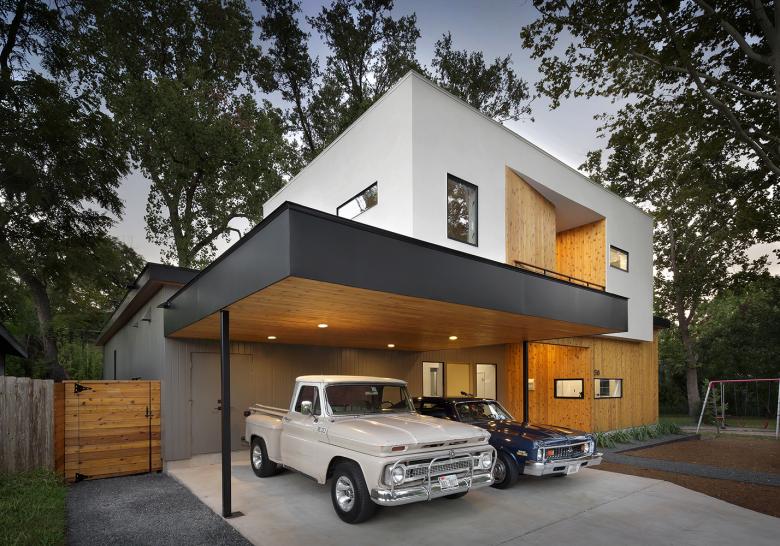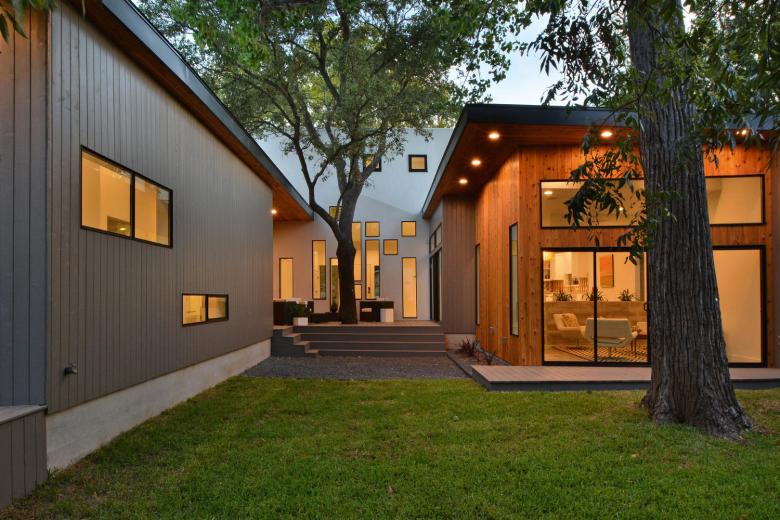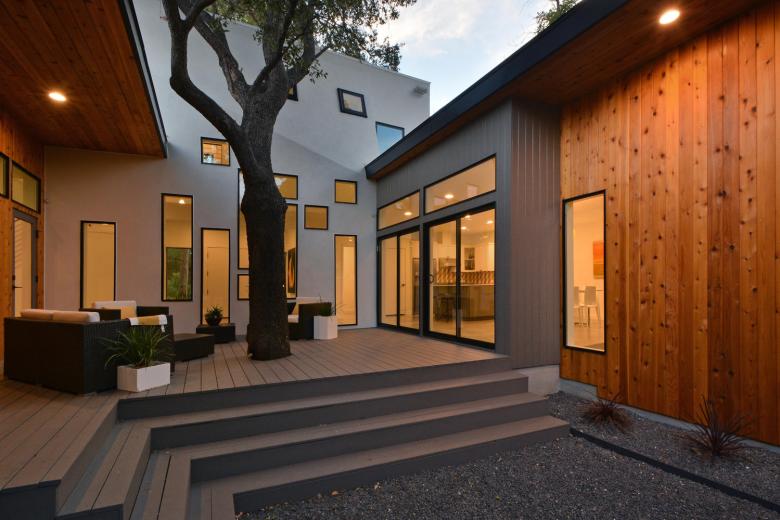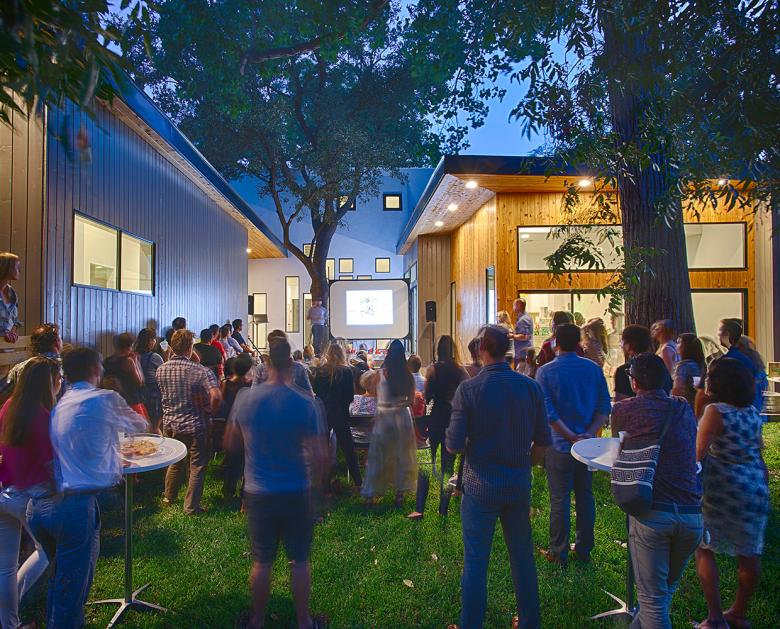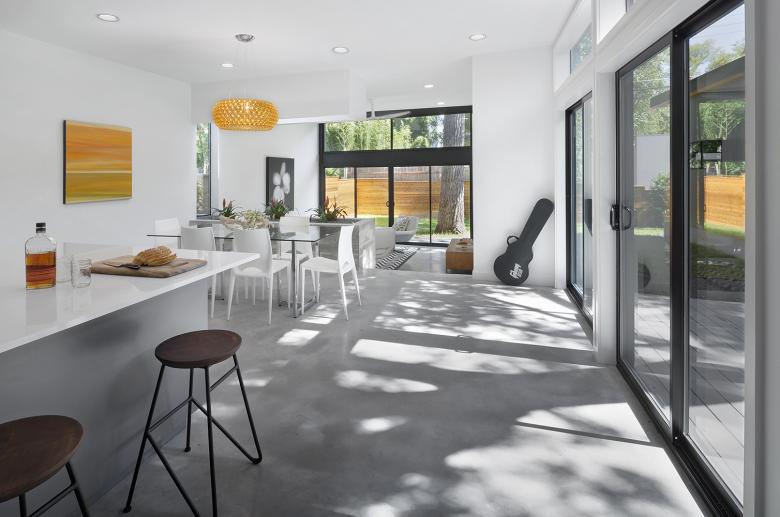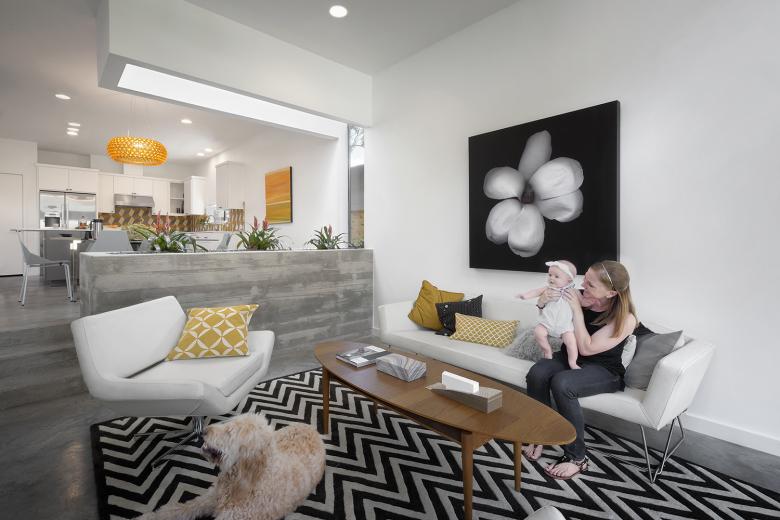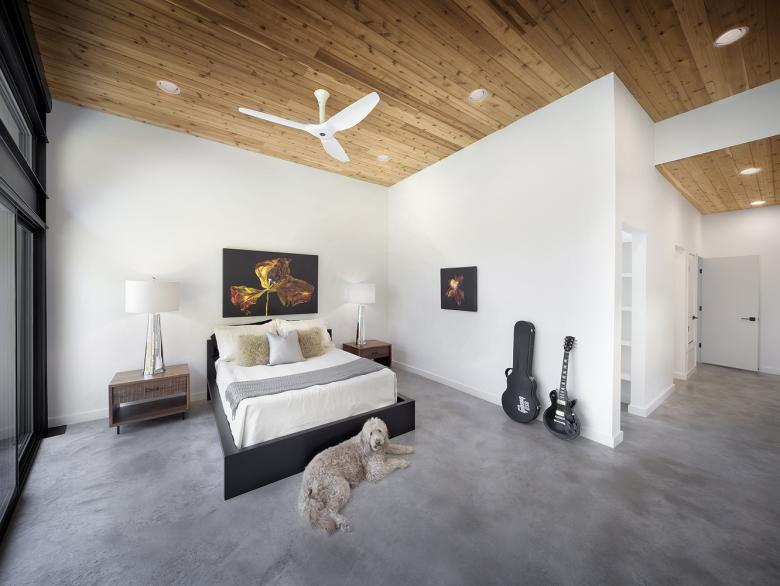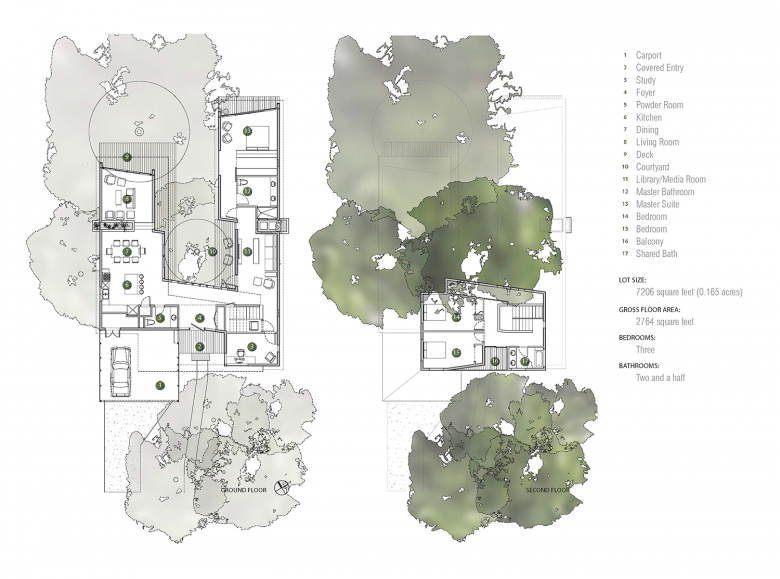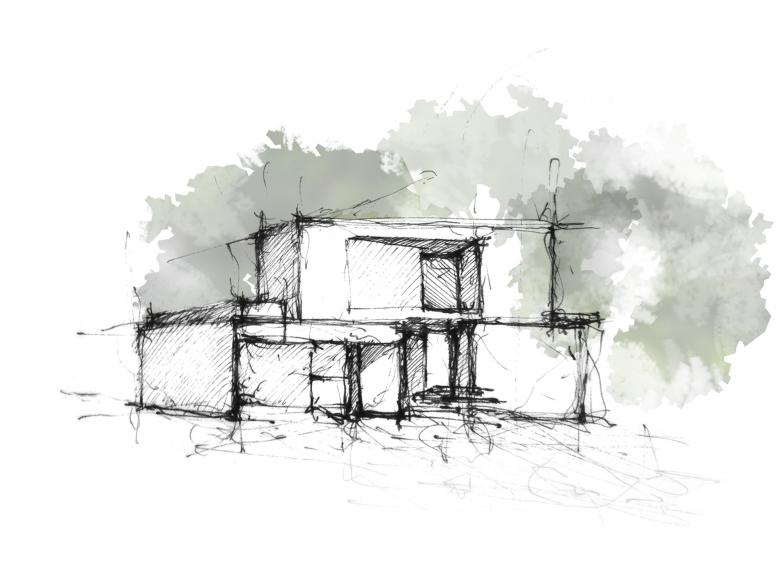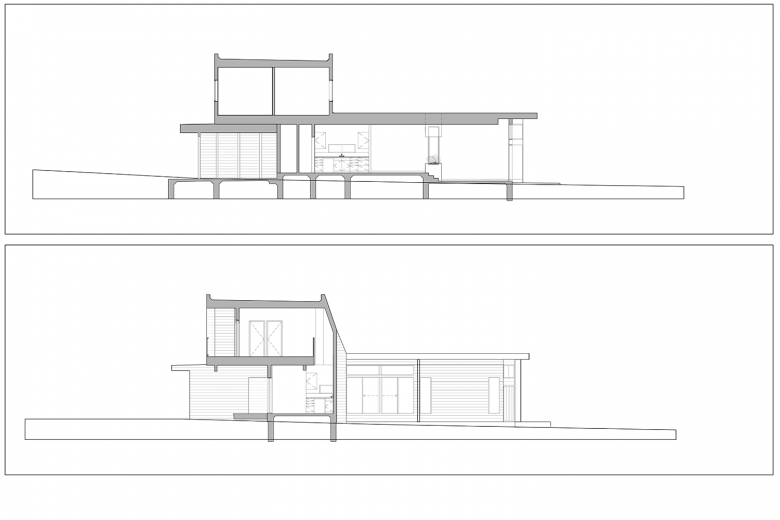Tree House
The aptly named Tree House, designed by Matt Fajkus Architecture for a site in South Austin, wraps itself around a sizable oak tree, making it an integral part of the owners' daily lives. The architect sent us some photographs and drawings, and answered a few questions about the house.
What were the circumstances of receiving the commission for this project?
When the owners purchased the property near downtown Austin, they knew they needed to tear down the 800-sqaure-foot dilapidated home and construct a new house with enough space to raise a family. However, they weren’t sure of what to do with the existing live oak tree that dominated the center of the lot. The lot had previously scared off other buyers who didn’t want to deal with possibly removing or working around the tree, which was large, but also just small enough that it was not protected by an Austin ordinance and could be torn down. The owners approached Matt Fajkus Architecture for the firm’s unique approach to projects on a case-by-case basis and their reputation for creative problem-solving.
Please provide an overview of the project.
Balanced shade, dappled sunlight, and tree canopy views are the basis of the Tree House. The entry is located on center with the oak, and each space has a unique relationship to this central element.
The Tree House is a single-family residence in South Austin. The massing is composed as two single-story wings which delineate public and private realms and straddle the existing live oak tree on the lot. The two-story “window wall” maximizes the use of inexpensive windows which frame various views to the tree while creating a rich elevation and allowing for the harvesting of daylight to the entry zone. The upper portion of the wall tapers and folds back to allow the tree canopy to extend and grow. The windows act as playful apertures which activate the courtyard space at night, showcasing the preserved oak.
What are the main ideas and inspirations influencing the design of the building?
The primary challenge of the lot and the inspiration are one and the same: a large oak tree growing in the middle of a small urban lot. The design is composed to embrace the existing tree and create a meaningful domestic experience. The focus of the design is directed outdoors, celebrating the live oak that claimed the land first and welcoming it to be part of the family.
How does the design respond to the unique qualities of the site?
The lot is located in an urban setting, on a residential street with both modest old houses and newly-built modern residences. The size of the lot is about 7,200 square foot, with a live oak tree, 18 inches in diameter and 40 feet tall, occupying the middle of the property.
Outside the city’s ordinance protection, the tree could potentially be torn down to make space, in terms of for both design concepts and the house itself. Based on the belief that each project should be driven by the client, the site and its surroundings rather than being a singular, preconceived aesthetic, the team chose to incorporate the existing tree into the design to even become the namesake of the project.
Furthermore, the childrens‘ rooms are composed as an articulated stucco-clad volume on the upper floor, nested in the tree canopies, reminiscent of a "tree house."
Was the project influenced by any trends in energy-conservation, construction, or design?
Energy efficiency starts by reducing heating and cooling loads through the building envelope. All windows are double-glazed, thermally broken, and employ low E coatings. The wall and roof employ advanced framing and insulation that exceeds local code requirements; the walls are filled with blown-in insulation to ensure a seamless layer. Envelope tightness was specified at 2.5 ACH50 and verified with blower door testing, to minimize uncontrolled infiltration. This significantly outperforms the local energy code requirement of 6 ACH50. The design carefully integrates daylighting to reduce reliance on artificial lighting.
High performance equipment reduces the energy expended for conditioning the spaces, and for water heating. This includes a 16 SEER/80 AFUE HVAC system, and gas tankless water heaters with 90% thermal efficiency.
Email interview conducted by John Hill.
Tree House
Austin, TexasArchitect
Matt Fajkus Architecture
Austin
Project Team
Matt Fajkus, AIA; Travis Cook, David Birt
Design Support
Thomas Johnston
Structural Engineer
Smith Structural Engineers
Contractor
Brodie Builders
Staging
Blanton Design
Site Area
7,206 sf
Building Area
2,764 sf
Photography
Brian Mihealsick; Bryant Hill; Allison Cartwright – Twist Tours

